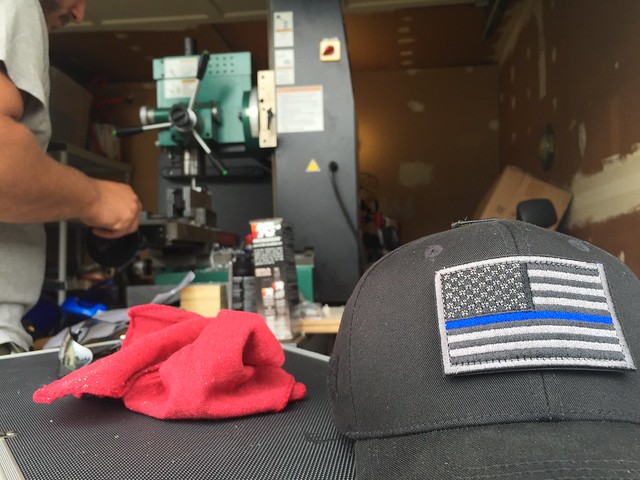So this weekend I tried milling out a lower. I practiced on a plastic lower I had from EP armory first and it went quickly. I then attempted a forged aluminum lower and had some interesting questions. (I know there are drill/router kits but I really, really, really wanted to make this mill work)
My first question is about the jig or vice I have. I'm not sure which is more of an issue but here we go. The vice is about 1.5" tall (this is my second time using the mill and I haven't ever measured it. I just bought this mill 4 months ago) and doesn't nearly give the jig support towards the top of the jig where the lower actually takes up space. It's a Daytona tactical jig which seems really barebones in terms of capabilities. I noticed that if I wrench down on the jig too much, there's flex in the sides. Should I mill a spacer to put at the bottom or is there a vice that is taller and can support the sides closer to where they're joined?
Also, when it comes to removing the jig for measuring, is there a more accurate way to mark and return to the position you were at in the vice besides making marks on the outside of the jig?
And the last odd question I had (can you tell I'm not a machinest?!) had to do with depth and speed. Is it better to mill less material and move faster around the area that needs to be removed or remove more material and move slower around said area?
I think those were my major questions. TIA
-Wally
Here's a gratuitous iphone picture of my buddy also giving the mill a hand lol

My first question is about the jig or vice I have. I'm not sure which is more of an issue but here we go. The vice is about 1.5" tall (this is my second time using the mill and I haven't ever measured it. I just bought this mill 4 months ago) and doesn't nearly give the jig support towards the top of the jig where the lower actually takes up space. It's a Daytona tactical jig which seems really barebones in terms of capabilities. I noticed that if I wrench down on the jig too much, there's flex in the sides. Should I mill a spacer to put at the bottom or is there a vice that is taller and can support the sides closer to where they're joined?
Also, when it comes to removing the jig for measuring, is there a more accurate way to mark and return to the position you were at in the vice besides making marks on the outside of the jig?
And the last odd question I had (can you tell I'm not a machinest?!) had to do with depth and speed. Is it better to mill less material and move faster around the area that needs to be removed or remove more material and move slower around said area?
I think those were my major questions. TIA
-Wally
Here's a gratuitous iphone picture of my buddy also giving the mill a hand lol




